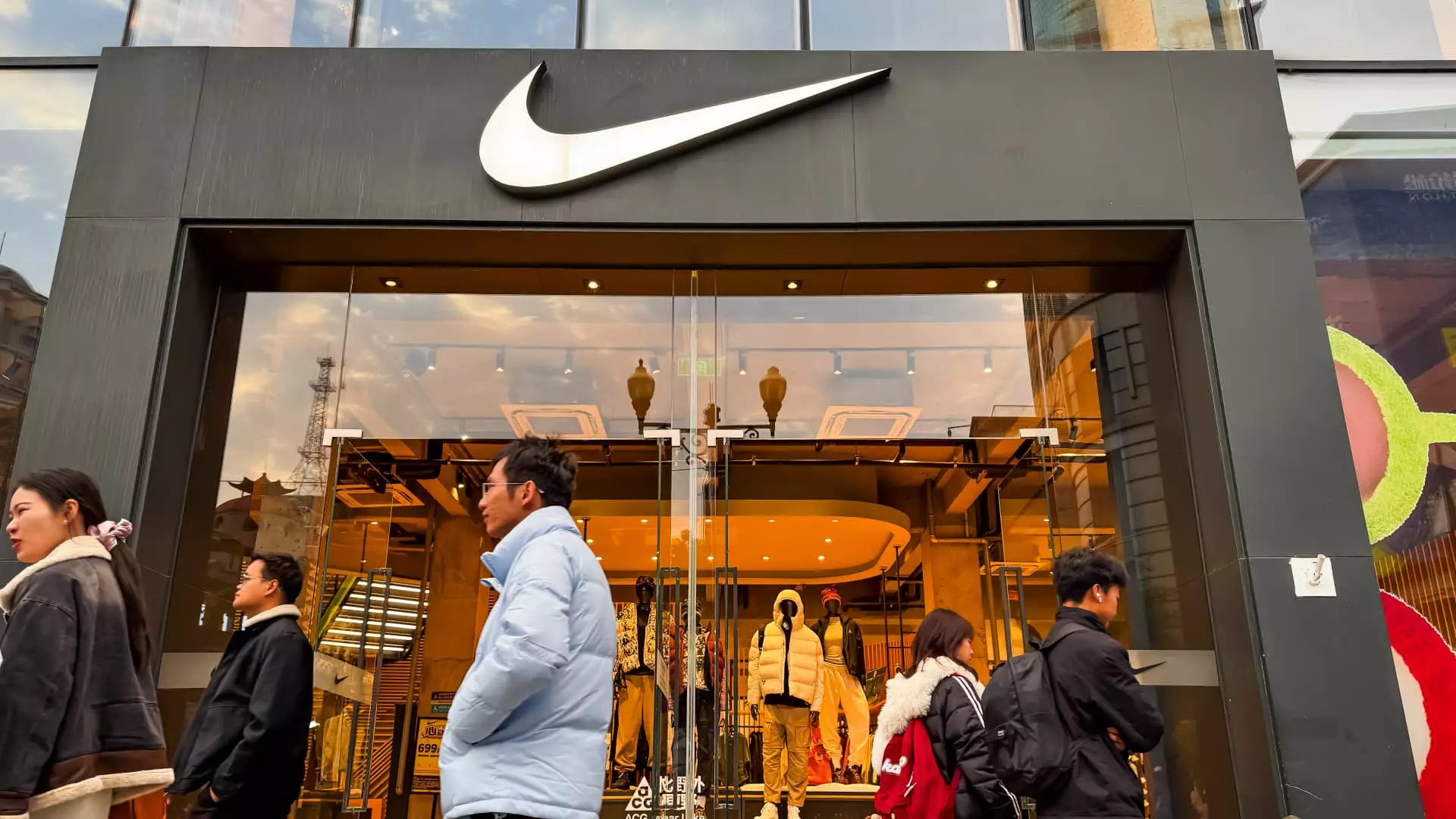Nike, the titan of the sneaker world, recently raised alarms with a prediction that sales would plummet by double digits in its current quarter. This forecast, which casts a long shadow over the brand, highlights a significant disconnect between consumer expectations and the harsh realities facing the company. Matt Friend, Nike’s finance chief, indicated during an analyst conference call that the sales decline could range within the low end of the “mid-teens.” This was a shocking revelation for analysts, who had expected a decline of around 11.4%. Such a stark deviation raises an unsettling question: is Nike facing a fundamental crisis, or can it pivot effectively to navigate through turbulent waters?
Adding to the tumultuous scenario, the company anticipates a decrease in gross margin by up to 5 percentage points. The driving force behind this decline? An urgent need to offload excess inventory and outdated styles that have lost their appeal to a fickle consumer base. Essentially, Nike is in a race against the clock to rejuvenate its image while managing the fallout from its less-than-stellar past decisions. Unlike fleeting trends, the implications of this struggle are likely to linger, and failure to recover might spell significant trouble down the line.
Political Headwinds and their Currency Effects
In addition to internal woes, external forces are also wreaking havoc. The unique challenges posed by geopolitical dynamics, new tariffs, and fluctuating exchange rates add layers of complexity to Nike’s attempt at a turnaround. The recently imposed 20% tariff on goods imported from China, a crucial hub for Nike’s manufacturing, poses a double-edged sword. If Nike does not adapt by raising prices or finding ways to offset these costs, its profit margins will take a substantial hit, leading to further consumer alienation.
This situation is more than just an economics lesson; it’s reflective of a larger sentiment within the retail landscape. Walking a tightrope between pricing strategies and maintaining consumer loyalty, Nike must navigate an increasingly skeptical market. As consumer confidence dips, discretionary spending is among the first victims; sneakers and athletic wear that were once seen as essentials may soon be perceived as luxuries. It’s a perilous time for Nike, as it contends with the possibility that shoppers may simply stop buying.
Leadership under Pressure: A Quest for Confidence
Five months into Elliott Hill’s tenure as CEO, Nike finds itself in a precarious position. Despite some operational advances, like winning over wholesale partners and reigniting innovation, results have yet to materialize meaningfully. The reality is that stockholders and analysts are acutely aware of the ticking clock—expectations are high, and patience is running low. Hill’s insistence that improvements are on the horizon may sound familiar to sunk investors hoping for a miracle turnaround.
Compounding this pressure, the latest quarterly results reflect both promise and struggle. Earnings saw a significant drop, despite exceeding Wall Street’s expectations—indicating that contingencies are being strategically implemented, albeit amidst a smokescreen of financial struggles. When sales dropped 9%, largely driven by weaker performance in China—a market that Nike has specifically targeted for growth—investors rightfully grew restless.
Innovation: The Catalyst for Recovery?
The sustainability of Nike’s market leadership hinges on its ability to innovate. While collaborations like NikeSKIMS—born from a partnership with Kim Kardashian’s intimates brand—signal a strategic shift towards capturing the female demographic, the real question lies in how effective these initiatives will be. With fierce competitors like Lululemon and Alo Yoga entrenched in this sector, simply changing course won’t cut it unless the offerings resonate with a burgeoning pool of discerning consumers.
Furthermore, during the Super Bowl—a cultural litmus test for brand identity—Nike launched a new campaign aimed at female athletes, a bold move that indicates recognition of previously overlooked market opportunities. This venture both reflects commitment and desperation; Nike must reclaim market segments that it let slip away in an era that increasingly values female empowerment over traditional branding.
As the company looks beyond the horizon, its ability to innovate in product design while maintaining consumer trust is essential. The resounding call from analysts will be for concrete evidence that new products are landing well among consumers. Without successful launches to speak of, all the headwinds facing Nike might drown out any progress made otherwise.
In the harsh light of current market realities, Nike stands at a pivotal crossroads: it must adapt swiftly or risk becoming a footnote in a future history of retail giants. The balance of power has shifted, and following the old playbook could lead to irrelevance in an industry that increasingly demands agility and authenticity. Nike must look inward while simultaneously navigating a treacherous economic landscape dominated by uncertainty—every decision risks making or breaking the brand’s storied legacy.

